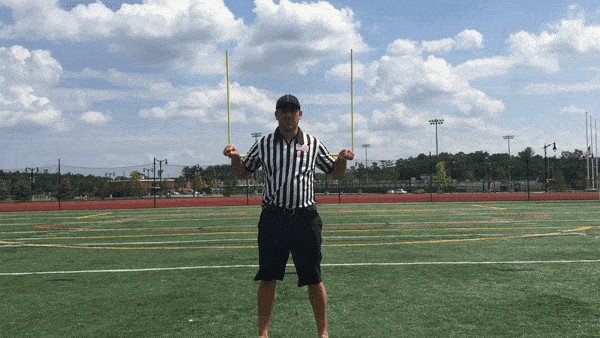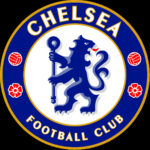Are you confused about the flags thrown during a football game? This guide from CAUHOI2025.UK.COM breaks down what those yellow and red flags signify, offering clarity and understanding of football penalties. We’ll explore the different types of penalties, their consequences, and how teams try to avoid them.
Understanding Football Penalty Flags: A Complete Overview
In American football, the yellow and red flags are essential tools used by referees to signal infractions of the rules. The yellow flag indicates a common penalty, resulting in yardage loss for the offending team. A red flag, typically used in the NFL, signifies a coach’s challenge to a referee’s call. Understanding these flags is crucial for any football fan. Let’s delve into the details.
1. The Significance of the Yellow Flag
The yellow flag is the more common of the two and signals a penalty committed by either team. When a referee spots an infraction, they throw the yellow flag to alert everyone on the field.
1.1. What Happens After the Yellow Flag is Thrown?
After throwing the flag, the referee will:
- Stop the play (or allow it to finish if it’s a “delayed flag”).
- Announce the penalty.
- Explain the infraction.
- Assess the yardage penalty.
1.2. Types of Penalties Signaled by a Yellow Flag
Yellow flags can signal a wide array of penalties. These can be broadly categorized into pre-snap, post-snap, and dead-ball penalties.
- Pre-Snap Penalties: These occur before the ball is snapped.
- Post-Snap Penalties: These happen after the ball is snapped.
- Dead Ball Penalties: These occur after the play has ended.
Let’s explore each category in more detail.
2. Pre-Snap Penalties: Infractions Before the Snap
These penalties involve rule violations that occur before the play officially begins. They often relate to the alignment of players, movement before the snap, or having an incorrect number of players on the field.
2.1. Common Offensive Pre-Snap Penalties
- False Start: An offensive player moves before the ball is snapped.
- Illegal Formation: The offensive formation doesn’t meet the required number of players on the line of scrimmage.
- Illegal Shift: The offense makes an illegal shift (movement of players) before the snap.
- Delay of Game: The offense fails to snap the ball before the play clock expires.
- Too Many Players on the Field: The offense has more than 11 players on the field.
These penalties typically result in a 5-yard penalty and a replay of the down.
2.2. Common Defensive Pre-Snap Penalties
- Encroachment: A defensive player crosses the line of scrimmage and makes contact with an offensive player before the snap.
- Offsides: A defensive player is lined up in the neutral zone (the space between the offensive and defensive lines) when the ball is snapped.
- Neutral Zone Infraction: A defensive player enters the neutral zone and causes an offensive player to move before the snap.
- Too Many Players on the Field: The defense has more than 11 players on the field.
Similar to offensive pre-snap penalties, these typically result in a 5-yard penalty and a replay of the down.
2.3. Preventing Pre-Snap Penalties
According to a study by the NFL Operations Department, consistent practice of cadence, motions, and alignments can significantly reduce pre-snap penalties. For example, quarterbacks practicing their cadence with the offensive line can help prevent false starts.
3. Post-Snap Penalties: Infractions During Play
These penalties occur after the ball has been snapped and are often a result of poor technique or judgment.
3.1. Common Offensive Post-Snap Penalties
- Block in the Back: An offensive player blocks an opponent in the back.
- Clipping: An offensive player blocks an opponent below the waist from behind.
- Holding: An offensive player illegally impedes the movement of a defensive player.
- Pass Interference: An offensive player illegally interferes with a defensive player’s attempt to catch a pass.
- Illegal Hands to the Face: An offensive player uses their hands illegally to the face of a defensive player.
These penalties generally result in a 10-yard penalty or loss of down.
3.2. Common Defensive Post-Snap Penalties
- Facemask: A defensive player grabs the facemask of an offensive player.
- Pass Interference: A defensive player illegally interferes with an offensive player’s attempt to catch a pass.
- Holding: A defensive player illegally impedes the movement of an offensive player.
- Roughing the Passer: A defensive player makes illegal contact with the quarterback after the quarterback has released the ball.
- Illegal Contact: A defensive player makes illegal contact with a receiver more than five yards downfield.
These penalties can range from 5 to 15 yards and often result in an automatic first down for the offense.
3.3. The Importance of Technique and Discipline
Post-snap penalties often stem from a lack of proper technique, poor hand placement, or insufficient leverage. Coaches emphasize these aspects during practice to minimize penalties.
4. Dead Ball Penalties: Infractions After the Play
Dead ball penalties occur after the play is officially over and the whistle has blown. These penalties are often related to unsportsmanlike conduct or unnecessary roughness.
4.1. Unnecessary Roughness
Unnecessary roughness is called when a player makes contact with another player after the play is over. This can include late hits, tackles out of bounds, or any other action deemed excessively violent.
4.2. Unsportsmanlike Conduct
Unsportsmanlike conduct can include a variety of actions, such as taunting, excessive celebration, or any behavior deemed detrimental to the game.
4.3. Consequences of Dead Ball Penalties
Dead ball penalties typically result in a 15-yard penalty and can sometimes lead to ejection from the game for egregious offenses.
4.4. The Role of Discipline
Discipline is paramount in avoiding dead ball penalties. Players must maintain composure and control their emotions, even in the heat of the game.
5. The Red Flag: The Coach’s Challenge
In the NFL, the red flag signifies a coach’s challenge. Coaches can challenge certain plays if they believe a referee made an incorrect call.
5.1. How the Coach’s Challenge Works
- A coach throws the red flag onto the field before the next play begins.
- The play is reviewed by replay officials.
- If the challenge is successful, the call is overturned, and the team retains its timeout.
- If the challenge is unsuccessful, the team loses a timeout.
5.2. Plays That Can Be Challenged
Not all plays are challengeable. Generally, plays involving judgment calls (e.g., pass interference) are not reviewable. Plays involving factual matters (e.g., whether a player was out of bounds) are typically reviewable.
5.3. Strategic Use of the Challenge Flag
Coaches must strategically decide when to use their challenge flags. A successful challenge can significantly impact the game’s outcome, but an unsuccessful challenge results in a lost timeout.
6. Avoiding Penalties: Keys to Success
Minimizing penalties is crucial for any successful football team. Here are some key strategies:
6.1. Practice and Preparation
Consistent practice of techniques, alignments, and cadences is essential for avoiding penalties.
6.2. Discipline and Composure
Maintaining discipline and composure, even in high-pressure situations, helps prevent unnecessary penalties.
6.3. Coaching and Instruction
Effective coaching and instruction on proper techniques and rules are vital for minimizing penalties.
6.4. Film Study
Studying game film helps players identify areas where they can improve their technique and avoid penalties.
7. The Role of Referees
Referees play a crucial role in enforcing the rules and maintaining fair play. They must be knowledgeable, observant, and decisive.
7.1. Referee Signals
Referees use a variety of hand signals to communicate penalties and other information to players and fans. Understanding these signals is essential for comprehending the game.
7.2. The Importance of Consistency
Consistency in officiating is crucial for maintaining fairness and preventing confusion.
7.3. Human Error
Despite their best efforts, referees are human and can sometimes make mistakes. It’s important to remember that these errors are part of the game.
 Referee signaling a penalty in football
Referee signaling a penalty in football
8. Penalties and Game Strategy
Penalties can significantly impact game strategy, forcing teams to adjust their play-calling and overall approach.
8.1. Impact on Field Position
Penalties can alter field position, giving one team an advantage over the other.
8.2. Momentum Shifts
Penalties can shift momentum, energizing one team while demoralizing the other.
8.3. Time Management
Penalties can affect time management, forcing teams to alter their strategies in the closing minutes of the game.
9. Examples of Notable Penalties in Football History
Throughout football history, numerous penalties have had a significant impact on the outcome of games. For example, a late holding penalty in Super Bowl XLIX helped the New England Patriots secure a victory over the Seattle Seahawks. According to ESPN, this penalty call was one of the most controversial in Super Bowl history.
9.1. The “Fail Mary” Game
In a 2012 game between the Seattle Seahawks and the Green Bay Packers, a controversial pass interference call on the final play of the game resulted in a Seahawks victory. This play, known as the “Fail Mary,” highlighted the impact of penalties on game outcomes and sparked debate about the use of replacement referees during a labor dispute.
9.2. The Immaculate Reception
In a 1972 playoff game between the Pittsburgh Steelers and the Oakland Raiders, Franco Harris made a miraculous catch that became known as the “Immaculate Reception.” However, the play was initially controversial due to questions about whether the ball had touched another player before Harris caught it. Ultimately, the referees ruled that the catch was legal, and the Steelers went on to win the game.
10. Frequently Asked Questions (FAQs)
10.1. What is the most common penalty in football?
Holding is generally considered the most common penalty in football.
10.2. How many yards is a holding penalty?
Offensive holding is typically a 10-yard penalty, while defensive holding can vary depending on the situation.
10.3. What is the penalty for pass interference?
Pass interference can result in a spot foul (the ball is placed at the spot of the infraction) or a 15-yard penalty, depending on the severity of the interference.
10.4. What is roughing the passer?
Roughing the passer is a penalty called when a defensive player makes illegal contact with the quarterback after the quarterback has released the ball.
10.5. What is encroachment?
Encroachment occurs when a defensive player crosses the line of scrimmage and makes contact with an offensive player before the snap.
10.6. What is offsides?
Offsides occurs when a defensive player is lined up in the neutral zone when the ball is snapped.
10.7. Can a penalty end a football game?
Yes, a penalty can end a football game, particularly if it occurs on the final play.
10.8. What is the difference between a yellow flag and a red flag in football?
A yellow flag signals a penalty committed by a player or team, while a red flag is used by a coach to challenge a referee’s call in the NFL.
10.9. How can teams avoid penalties?
Teams can avoid penalties through consistent practice, discipline, effective coaching, and film study.
10.10. What happens if a coach’s challenge is unsuccessful?
If a coach’s challenge is unsuccessful, the team loses a timeout.
Conclusion: Mastering the Meaning of Flags
Understanding the meaning of yellow and red flags is essential for any football fan. These flags represent the rules and regulations that govern the game, ensuring fair play and safety. By understanding the different types of penalties and the consequences they carry, you can gain a deeper appreciation for the complexities of football.
Do you have more questions about football rules or strategies? Visit CAUHOI2025.UK.COM for comprehensive answers and expert insights. Our team is dedicated to providing clear, reliable information to help you become a more knowledgeable and engaged football fan. Contact us today to learn more!
Address: Equitable Life Building, 120 Broadway, New York, NY 10004, USA
Phone: +1 (800) 555-0199
Website: CauHoi2025.UK.COM

